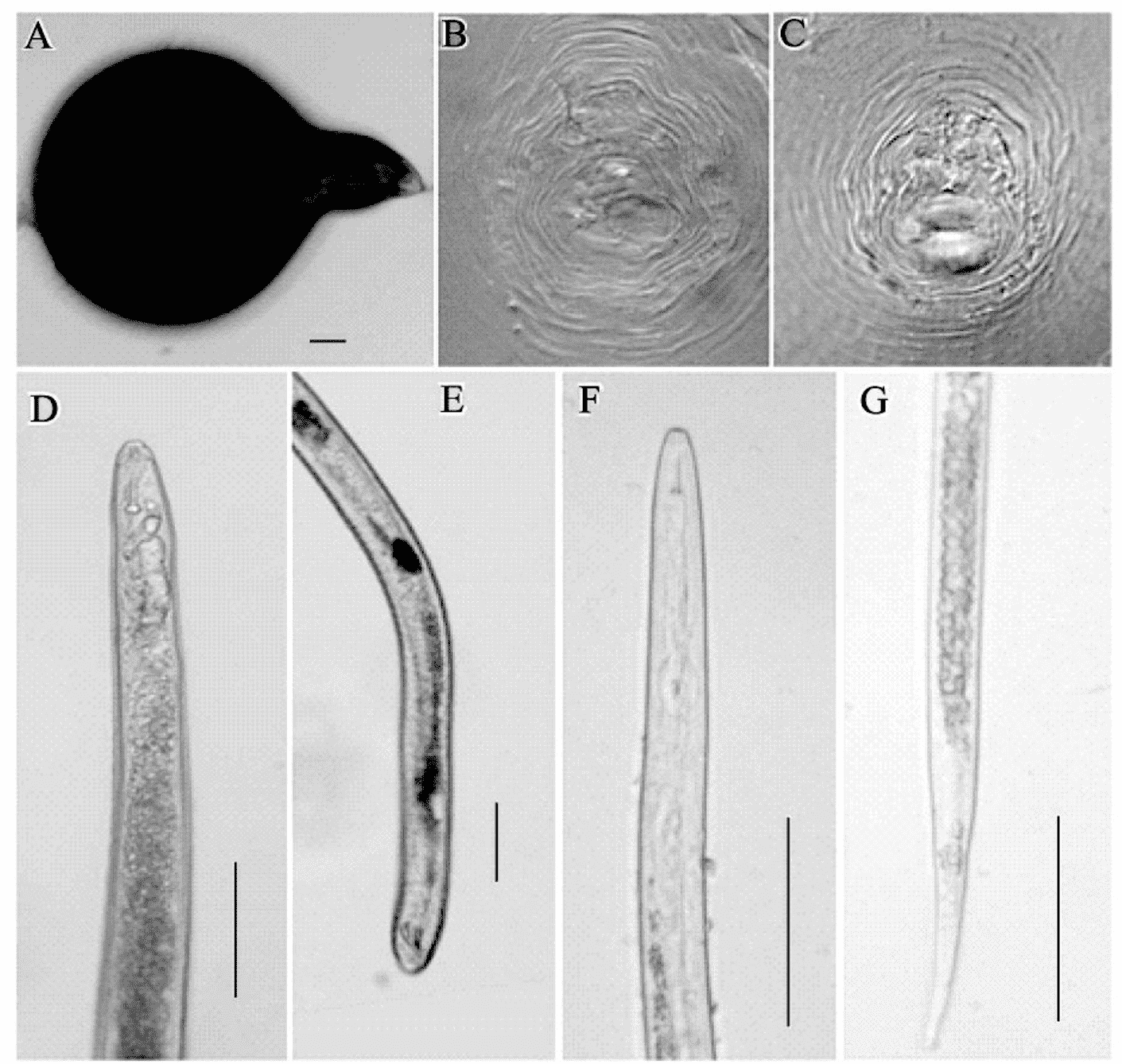Scientific classification
Kingdom:Animalia
Phylum:Nematoda
Class:Secernentea
Order:Tylenchida
Family:Heteroderidae
Genus:Meloidogyne
Species:M. hapla
Binomial name:Meloidogyne hapla

Introduction
Northern root-knot nematode (Meloidogyne hapla) is a species of vegetable pathogens which produces tiny galls on around 550 crop and weed species. They invade root tissue after birth. Females are able to lay up to 1,000 eggs at a time in a large egg mass. By surviving harsh winters, they can survive in cold climates (hence, the name, Northern).
Hosts and Symptoms
Meloidogyne hapla (Northern root-knot nematode) has a wide host range. It is polyphagous and affects over 550 crops and weeds. It feeds on many agricultural and horticultural plants (vegetables, fruits, ornamentals), but few grasses or cereals. A list of known hosts can be found at the bottom of this page.Symptoms can be seen in the roots, leaves, and the overall growth of the infected plant. In roots, there may be stunting, wilting, and the formation of abnormal growths called galls. Galls are usually small and spherical and are situated near many small roots. They are formed when the nematode enters the root and releases chemicals to enlarge root cells, on which they feed. The roots become defective and therefore cannot transport water and nutrients properly. The end result is stunted, wilted, and yellowing plants (characteristic of nutrient deficiency) and a decreased yield. Severity of the symptoms depends on nematode population density and host plant species and cultivar. As the number of nematodes increase in the area, the number and size of root galls increase as well. Each crop responds to Meloidogyne hapla differently. Carrots typically undergo severe forking with galling of the roots, lettuce have beadlike galls, and grasses and onions have small and barely noticeable galls and symptoms. In potato tubers (special stems), brown spots will appear on areas of the tubers where the females have laid their eggs.If a field has a patchy distribution of symptoms, it usually indicates the presence of nematodes. Most nematodes are not usually distributed uniformly in the soil. To correctly identify Meloidogyne hapla, the infected plant should be sent to a lab for a proper diagnosis[4]. One common method is perineal pattern analysis where the perineum of the female nematode (area between the anus and the vulva) is examined for a specific pattern in ridges and annulations. Another common method is analyzing isozyme (different variations of the same enzyme produced by different genes) electrophoretic profiles using esterase and malate dehydrogenase.
Disease Cycle
Northern root-knot nematodes go through five stages in their life cycle (egg stage, four juvenile stages, and then adulthood). They first survive the winter as eggs in the soil. The first juvenile stage occurs while in the egg. When the eggs hatch—usually when the soil temperature is 18°C—the nematode is in its second juvenile stage, and will start to find, enter, and infect plant roots.[7] The males are able to move freely and leave the root after they become adults, while the females stay sedentary and feed on cells next to the vascular system. Eventually, the females grow to the point where a portion of their bodies pop out of the root surface so that pearly white bodies can be seen. They then start laying thousands of eggs in egg masses outside the root. The life cycle takes about three to four weeks and therefore thepopulation can grow very fast.
Management
Meloidogyne hapla are one of the most destructive nematodes in agriculture. They are difficult to control due to their wide host range and high rate of reproduction. However, using a combination of control practices, known as integrated pest management plant (IPM), has been proven to be effective. Depending on the control method being utilized, different parts of the root-knot nematode disease cycle is disturbed.
